Intimidating Iraq: Our Journey Through Mosul and Iraqi Kurdistan
- Trekking For Alpha

- Apr 26
- 10 min read
After turning a blind eye to the State Department’s Level 4 Do No Travel Warning - which includes advice varying from crafting your will to sharing important login information and documents with loved ones prior to departure - we thought we would keep things ‘safe’ and first headed to the Kurdish autonomous zone. As a background, Iraq is broadly divided into two parts: i) “The Federation” which includes most of the country and contains Baghdad, Mosul, Basra, etc. and most of the other major sites we associate with Iraq and ii) Kurdistan which is a Kurd-majority, semi-autonomous region in Northern Iraq. Currently, Kurdistan is considered relatively more stable and safe than the Federation.
As expected, there are few, if any, travel guides on Iraq. Because of this, we thought publishing our seven day itinerary for Mosul and Iraqi Kurdistan would be helpful for those intrigued by this beautiful region. NOTE: we know this is a very long and detailed article. We wanted to be thorough as Iraq is the destination we get asked about most given its looming presence in the news cycle the past few decades. We hope this is helpful for anyone interested in visiting!
One incredibly important point to note before you head out for Iraq is that nearly everything is in cash - hotels, cars, food, sim cards, etc. so come prepared. This is the most cash-reliant country we have been to. Attaining Iraqi dinars is also not as straightforward as currency exchange in other countries. There is a robust and easily accessible black market in the center of Erbil that rewards patrons with a 10-15% uplift to the official exchange rate. This is a byproduct of sanctions and these dollars may head to some shady place so we don’t recommend using them. You can also use more official exchange channels as well as ATMs. However, only a handful of ATMs work in Erbil so be patient and if needed head to one of the nicer hotels in the city with an ATM as often these are more reliable.
Before we dig into the itinerary, it would be remiss to not address safety. Minus feeling a little unease seeing General Soleimani’s picture plastered every 100 feet on posters lining the road to Mosul and the very visible presence of Shia militia in Mosul, we felt very safe during our visit. This is not to say Iraq is a safe place to visit. Conditions change quickly and you should always do significant research on the current state of affairs before booking your own Iraqi adventure.
We started our voyage in this turbulent Middle Eastern nation in the vibrant city of Erbil, the capital of Iraqi Kurdistan. Upon arrival, we were immediately taken by how normal things were. The airport was normal, getting a sim chip was normal, getting a taxi was normal, there were great roads and infrastructure. After growing up during the Iraq War, we were expecting Iraq to feel like another planet, but it didn’t.
On our first day, we explored the historic citadel and bazar. Settled over 6,000 years ago, the Erbil Citadel is one of the longest permanently occupied sites in the world. Unfortunately, the Citadel was closed for renovation the day we visited, however, the view from the outer gates offered fantastic views of the city.
Next we explored the bazar. Surrounding the entrance to this ancient market, street carts are piled high with everything from ruby red pomegranate seeds, brightly-colored Turkish delight, and stacks and stacks of currency with the latter being a byproduct of sanctions (more on this later). Upon entering the bazar, we were greeted by stalls after stalls selling lavashak a tangy, sour, juicy, and sweet Persian treat consisting of a fruit jam – cherry, apricot, barberry, pomegranate, tamarind – cradled by a fruit leather. After winding through lavashak stalls and traditional clothing vendors, we made our way to an old-tea house nestled deep in the bazar’s corridors. Stuffed in a back corner of the smoke-filled tea house surrounded by men adorned in traditional Kurdish dress, it was comical how much we stood out. The men quickly made us feel right at home though as they passed us the communal bag of walnuts and sunflower seeds just like we were one of the regulars.
After sipping on the most sugary tea we have ever had in our life (tea in Kurdistan is literally ¼ sugar), we made a stop that would forever change our view on meat craftsmanship. Given it was midday, we were hungry, so we popped into Kebab Yasin, Erbil’s oldest and often regarded as best kebab establishment. We were escorted with chuckles and some photos (people are still amused to see Westerners around Iraq) to two chairs in the middle of a communal table. Within minutes the best kebabs we have ever had in our lives, kebabs so good we could not even believe meat mastery of this level was possible, were in front of us. We left floored and eager to return.
After the bazar, we headed to Ankawa, a Christian suburb of the city. Strolling the streets we passed liquor stores (alcohol is illegal in the Federation), Christmas decorations, and churches. It was really neat to see a Christian enclave within Iraq. Finally, we ended the day with a drink at a rooftop club – an experience we never expected to have within Iraq’s borders.
Our second day in Erbil was less exciting. We grabbed a traditional Kurdish breakfast which includes a countless number of cheeses, jams, olives, breads, and many many other things then checked out a few parks and mosques. We also indulged in the unique and succulent street food on Ishkan Road. The street food game in Iraq is off the charts. At dusk, vendors emerge and line a main road with street food for blocks and blocks and blocks. The variety of food is endless - piles of steaming baklava, freshly roasted sunflower seeds that were roasted in front of your eyes by what looked like a flame thrower, this incredible bean/pomegranate dish we never learned the name of, kunefe, shawarma, stews, kebabs, rice dishes, etc. Interlacing the food carts, tea vendors proudly tended to their wood-fueled fires heating the large copper pots which contained their goods. Between all of the new foods, exceptional quality, and flames from the tea stalls and sunflower seed vendors, dinner on Ishkan Road is an adventure of its own.
Day Three, we said goodbye to Erbil and headed three hours southeast to Sulaymaniyah, the second largest city in Iraqi Kurdistan. After an easy and scenic bus journey complete with a member of the Peshmerga (internal security force of Kurdistan) on board, we headed for Amna Suraka, the former site of one of Saddam Hussein’s secret prisons which he used to torture and kill an unknown number of Kurds. Today, the former prison is a museum. The prison cells and ISIS exhibit – complete with ISIS branded stamps and coins used by the “official government of the caliphate” collected from within 50 miles of Kurdistan – was a sobering reminder of how turbulent this part of the world was a mere few years ago.
After spending hours at the museum and literally getting dragged out by security at closing, we headed for the market. The Sulaymaniyah Sunday market is by far the best market we have ever been to. The streets were lined for what felt likes miles with carts filled with every type of Middle Eastern dessert imaginable, fruits and vegetables of every color and creed, candy, steaming vats of beans, overflowing sacks of nuts, halva, cheeses, honey, etc. It was a complete sensory overload.
We took things slower on Day Four. Hit up the Kurdistan culture museum, ducked into a few tea houses, and took an evening bus back to Erbil.
Day Five we ramped up the adventure a little bit and headed to Mosul, the second largest city in Federal Iraq. Mosul sits a mere 50 miles from Erbil, however, because it is in the Federation you are required to pass through immigration (which is commanded by a mix of Shia militia and officers from the federal government). After clearing immigration, the vibes instantly changed. Suddenly, we were surrounded by posters and billboards containing the faces of Ayatollah Khamenei, General Soleimani, and other Shia leaders and ‘martyrs’. Black flags, affiliated with the Shia militia and jarringly reminiscent of the ISIS flag from afar, billowed along the sides of the roads.
After a short drive, we arrived at our first stop: the market and reconstructed tomb of the prophet Jonah. Upon pulling up to the tomb, our guide (we never use guides but Mosul is pretty tricky right now) lifted up his phone and held it next to the monument and proceeded to play the iconic video of ISIS blowing up the ancient and holy building. Seeing the hustle and bustle of the town now, it was hard to believe that happened only a decade ago. On that bleak note, we rolled into the market where we were instantly and constantly swarmed by locals excited to see visitors. We felt like celebrities as market goers grabbed us to take pictures with us and issue words of welcome.
Next, we made our way to the ruins of Nineveh, an ancient Assyrian city in Upper Mesopotamia. When we arrived at the “ruins”, we were not even sure we were at the right place. It looked as if we were just in a poorly manicured field with large weapons strewn about, which we learned were from the ISIS war. Between the ISIS sacking and centuries of decay, there is very little left of the ruins. Only if you go with an experienced guide can you locate the treasures of this place – a crumbled gate here, an ancient cuneiform (the oldest written language) plaque there. Even though these ruins are in extreme decay it was still amazing to have such a historical site all to ourselves.
After Nineveh, we crossed the Tigris River and arrived at the Mosul Grand Mosque (f.k.a Saddam Mosque), a massive and incomplete mosque started during the Hussein administration. We were warned by our guide that nobody is ever allowed inside however, much to our pleasant surprise, the bored security guard on duty was eager to show us around. Standing inside such a large, historic, and abandoned structure was uniquely thrilling and haunting.
Following the mosque, we made our way to Old Town. As we approached this historic part of the city, the buildings lining the streets progressively became more and more destroyed. We knew we had arrived in Old Town when we were completely surrounded by rubble. As a background, Mosul was the headquarters of the illegitimate ISIS government. Because of this, Mosul saw some of, if not the worst, destruction and fighting during the ISIS war.
Upon exiting the car, our guide led us over to a sign which explained how walking in this part of the city works – if you see a check mark or “safe”, that means the region has been cleared of bombs, if you see an “x” that means it has not been cleared so do not go. With this warning in mind, we entered the rubble. The rubble that was a mere 11 years ago the vibrant heart of this large Iraqi city.
Walking through Mosul Old Town was one of the most surreal and emotional destinations we have ever been. Every single building was rubble. Peaking into buildings, you could see the possessions the last tenants left behind – blankets, shoes, stuffed animals, pots and pans. The destruction felt endless. It was complete and total. It went on for blocks and blocks and blocks. It was haunting. It was terrifying. And it was the most real reminder we have ever seen in person of the horrors of war.
As we weaved our way through the streets, signs of life started to appear. Kids playing soccer. People returning with bags of fish from the local market selling the day’s best catches from the Tigris. Cranes and construction teams hard at work repairing the outskirts of the hard hit neighborhood.

Our final stop of the day was at the Great Mosque of al-Nuri. This iconic mosque, featured on the 10,000 dinar note, was constructed in the 12th century and was famous for its leaning minaret. Unfortunately though, in 2014, the mosque rose to fame for a different reason. From the minbar under the mosque’s green dome, Abu Bakr al-Baghdadi declared the ISIS caliphate. The mosque remained at the epicenter of fighting during the ISIS War and was destroyed in 2017. Massive reconstruction efforts are underway to restore its glory prior to the ISIS years.
After a wild day in Mosul, we headed back to Iraqi Kurdistan. Day 6 we spent exploring the ethnic minority enclaves within Iraqi Kurdistan and checking out the beautiful mountain town of Akre. We started the day at Rabban Hormizd Monastery, a striking cliffside monastery dating back to the 600s. As we wondered the historic chambers and corridors of this ancient paradise, we could not believe we were the only visitors at such a complex. In this moment, we were reminded why we took the risk to come to Iraq in the first place.

Next we headed to Lalish Temple, the most holy site in the Yazidi religion. As a background, the Yazidis are a Kurdish-speaking religious group. The Yazidi religion is a bit of a melting pot as it includes elements from Zoroastrianism, Judaism, Islam, and Christianity. This group historically has been the target of many ethnically-motivated campaigns of violence including the infamous mass abduction of women during the ISIS war.
Before entering Lalish, we were briefed on some ground rules – you are not allowed to wear shoes at all in the village (including outside), you are not allowed to step on door frames, and you are not allowed to enter certain buildings. Shoeless, we entered the village and toured one of the most unique religious complexes we have ever been to.
Finally, we ended the day in the beautiful mountain town of Akre. We strolled the streets, took in the views, and enjoyed Kurdish “coffee”, a peanut flavored drink that is in fact not coffee, and tea. A lovely end to a fascinating day.
Day 7 was our final day in Iraq. After dodging push carts piled high with pomegranates and wheelbarrows overflowing with corn and green beans, we bizarrely arrived at our final destination in Iraq – the ‘Stok Exchange of Kurdistan To Change Currency in Shekhalla’. While it is possible the term stock exchange is used in jest (by the way Kurdistan is poised to launch the Erbil International Stock Market in 2025), it isn’t hard to see why this term is applied to this currency black market. If it weren’t for the market’s bizarre location situated in Erbil’s main fruit and vegetable bazaar, the platters with tulip-shaped tea glasses being passed through the crowd, giant sacks of US Dollars and Iraqi Dinars being paraded about, and men clad in Sorani dress (traditional Kurdish dress), one might think that they are on the trading floor of the New York Stock Exchange. Men are gathered around a platform – there is lots of yelling, hand signs, and trades are being made. While this is not a traditional stock exchange where foreign investors can attain alpha, we find that this show cases a vital part of the Iraqi economy to understand – the currency black market, currency / credit restrictions, etc.

We spent our final moments in Erbil eating as much as we could (IRAQ AND IRAQI KURDISTAN SERIOUSLY HAS INCREDIBLE FOOD) before it was time to depart this beautiful part of the world. We headed for the airport several hours early as there are several layers of security at the airport. We had such a great time, we almost ditched our flight tickets to Pakistan and exchanged them for the next flight to Baghdad, but figured we would save that adventure for another time.





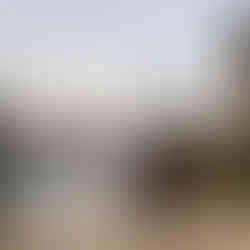











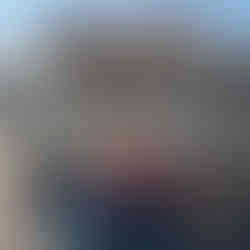








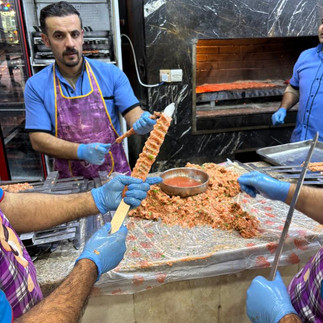



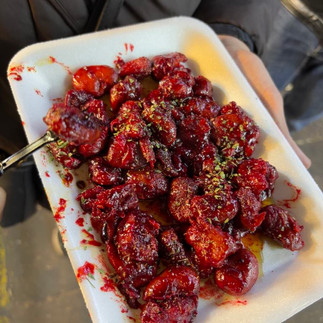

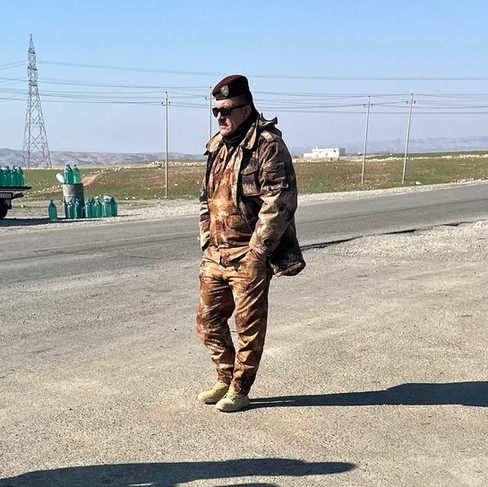













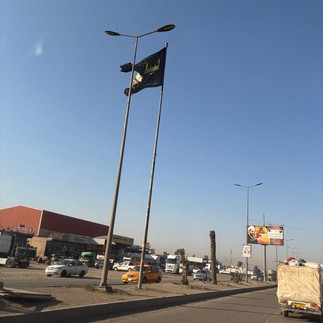





















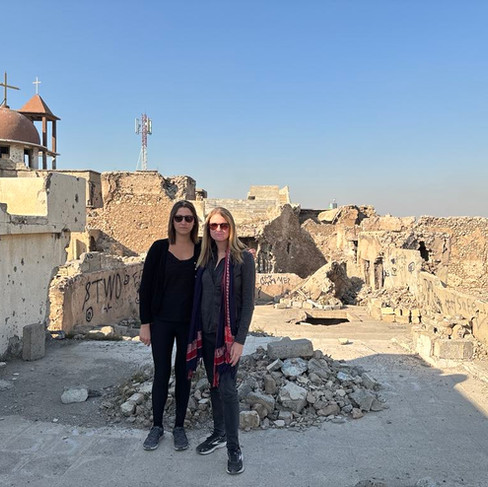























Comments